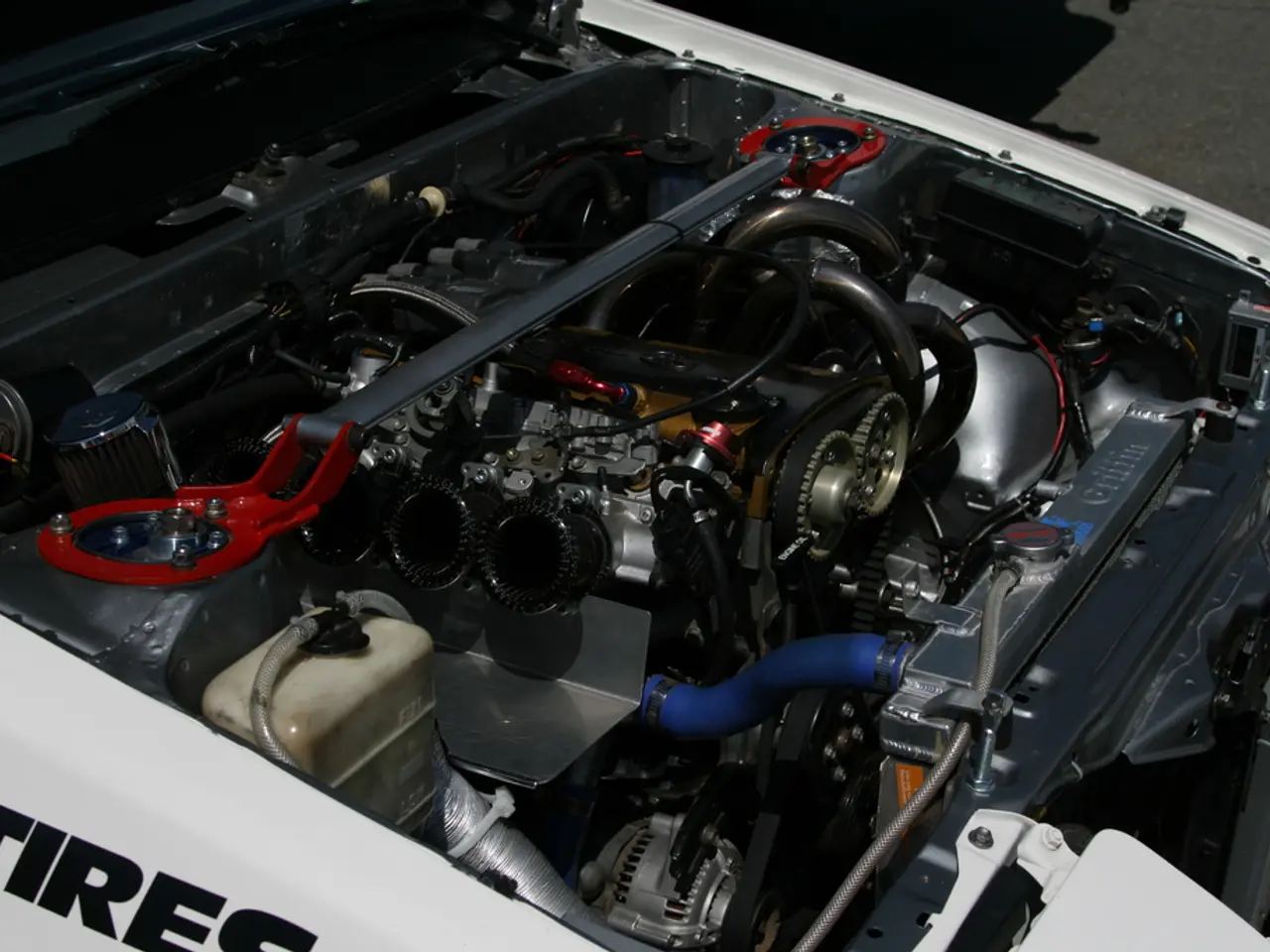Electronic vehicle battery health can now be continuously monitored in real-time, as revealed by scientists.
In a groundbreaking development, the German research organization Fraunhofer has unveiled a new method for real-time monitoring of electric vehicle (EV) battery health. Known as dynamic impedance spectroscopy, this advanced technique offers a detailed, accurate, and continuous picture of the battery's internal state, including its state of charge (SoC), state of health (SoH), and safety status[1][3][4][5].
Developed by the Fraunhofer Institute for Manufacturing Technology and Advanced Materials (IFAM), dynamic impedance spectroscopy makes real-time, high-frequency measurements of battery impedance during active use possible, surpassing older, slower impedance spectroscopy methods[1][2][3]. This method can be applied to various types of batteries, including lithium-ion, solid-state, sodium-ion, lithium-sulphur, and potentially future technologies[4].
The technology works by overlaying a multi-frequency test signal on the discharging or charging current of the battery and measuring the response up to one million times per second[3][4][5]. By processing this vast amount of impedance data in real time through sophisticated algorithms, the system can detect localized issues like overheating cells during driving and adaptively optimize battery use, such as shutting off affected cells or reducing power output[1][4][5].
This fine-grained, immediate insight allows battery management systems to improve performance and safety, prevent damage, and extend battery lifespan by avoiding harmful operating conditions and enabling predictive maintenance[1][2][4][5]. The technology could also aid in EV charging decisions, choosing between extra-fast charging or slower charging to reduce battery wear.
Hermann Pleteit, the project leader, stated that dynamic impedance spectroscopy opens up new possibilities for optimizing battery management, thereby extending the batteries' lifespan[5]. This technology eliminates the need for conventional temperature sensors on the outside of the battery cell, reducing potential costly and dangerous delays.
Moreover, dynamic impedance spectroscopy offers more comprehensive information than the battery charge status typically incorporated into electric vehicles' electronics[3]. This comprehensive data could pave the way for these batteries to be used in safety-critical applications. The shipping industry has shown interest in the technology, and it could also be used in ecofriendly electric aircraft, a market currently in its infancy.
Joshua S. Hill, a journalist specializing in climate change, clean technology, and electric vehicles, has been reporting on these topics since 2012 for Renew Economy and The Driven. His preferred mode of transport is his feet. This new development in battery monitoring represents a significant advancement in the field, enhancing safety, optimising battery management, and extending the operational life of EV batteries[1][2][3][4][5].
- This new development in battery monitoring, known as dynamic impedance spectroscopy, leverages data-and-cloud-computing and technology to extend battery lifespan by providing real-time, high-frequency measurements and predictive maintenance.
- This advanced environmental-science breakthrough, applied to various battery types, could not only enhance safety and optimize battery management in electric vehicles but also contribute significantly to the combat against climate-change, especially in sectors like the shipping industry and ecofriendly electric aircraft.




